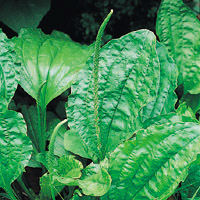Gluten Free
What does following a gluten-free diet mean? That you're embarking on an easy diet with a wide range of health-promoting effects. Instead of dwelling on what you’re giving up, consider that you’re going to enjoy a whole new world of delicious food options to meet your special dietary needs. You’ll be eating seasonally, choosing more fresh fruits and vegetables, focusing on meats, seafood, poultry, legumes, lentils, corn, and rice, and discovering fascinating ancient grains such as quinoa, amaranth, and millet. You’ll be able to eat potatoes, eggs, most cheeses, even chocolate (!)—and enjoy them without guilt because you’ll be taking good care of your body. In fact, you’ll probably end up eating—and feeling—better than ever!
Visit this page for more information about living Gluten Free
---
We carry a large variety of gluten free items, the brands listed below represent just some of the offerings we carry















More Diets
Plantain
 © Martin Wall
© Martin WallHow It Works
The major constituents in plantain are mucilage, iridoid glycosides (particularly aucubin), and tannins. Together these constituents are thought to give plantain mild anti-inflammatory, antimicrobial, antihemorrhagic, and expectorant actions.3, 4 Plantain is approved by the German Commission E for internal use to ease coughs and mucous membrane irritation associated with upper respiratory tract infections as well as topical use for skin inflammations.5 Two Bulgarian clinical trials have suggested that plantain may be effective in the treatment of chronic bronchitis.6, 7 Insufficient details were provided in these reports to determine the quality of the trials or their findings. Although plantain was thought to possess diuretic properties, one double-blind trial failed to show any diuretic effect for this plant.8 A preliminary trial found that topical use of a plantain ointment (10% ground plantain in a base of petroleum jelly) was helpful as part of the treatment of people with impetigo and ecthyma, two inflammatory skin disorders.9 Insufficient details were provided in this report, however, to determine the quality of the study or its findings.
How to Use It
The German Commission E recommends using 1/4–1/2 teaspoon (1–3 grams) of the leaf daily in the form of tea made by steeping the herb in 1 cup (250 ml) of hot water for 10–15 minutes (making three cups (750 ml ) per day).10 The fresh leaves can be applied directly three or four times per day to minor injuries, dermatitis, and insect stings.11 Syrups or tinctures, approximately 1/2 teaspoon (2–3 ml) three times per day, can also be used, particularly to treat a cough.12 Finally, 1/2–1 1/4 teaspoons (2–6 grams) of the fresh plant can be juiced and taken in three evenly divided oral administrations throughout the day.13
Copyright © 2025 TraceGains, Inc. All rights reserved.
Learn more about TraceGains, the company.
The information presented by TraceGains is for informational purposes only. It is based on scientific studies (human, animal, or in vitro), clinical experience, or traditional usage as cited in each article. The results reported may not necessarily occur in all individuals. Self-treatment is not recommended for life-threatening conditions that require medical treatment under a doctor's care. For many of the conditions discussed, treatment with prescription or over the counter medication is also available. Consult your doctor, practitioner, and/or pharmacist for any health problem and before using any supplements or before making any changes in prescribed medications. Information expires December 2025.











